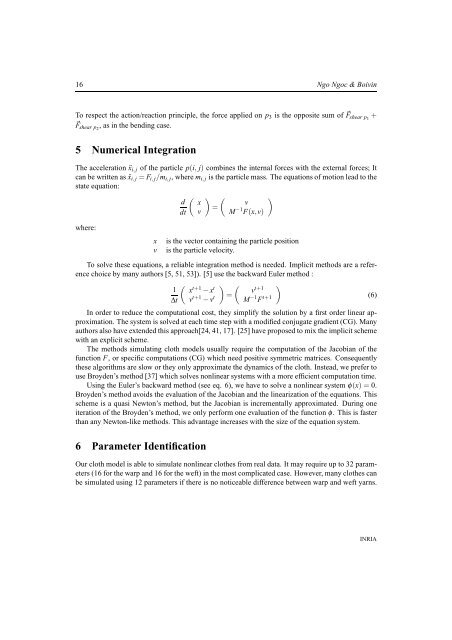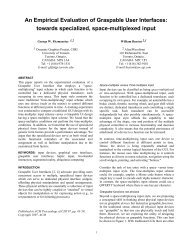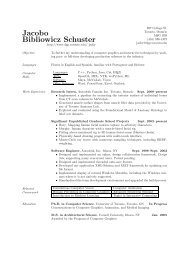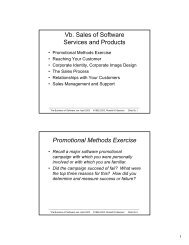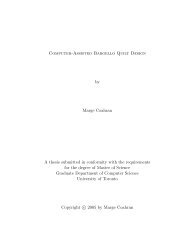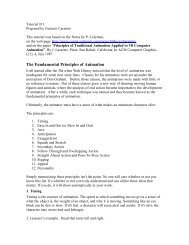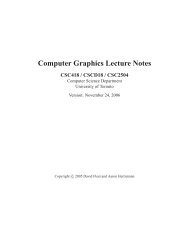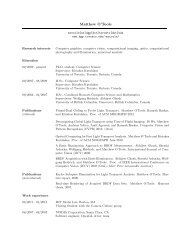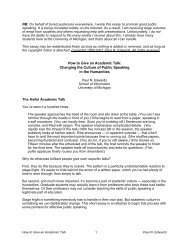Nonlinear Cloth Simulation - dgp
Nonlinear Cloth Simulation - dgp
Nonlinear Cloth Simulation - dgp
You also want an ePaper? Increase the reach of your titles
YUMPU automatically turns print PDFs into web optimized ePapers that Google loves.
16 Ngo Ngoc & Boivin<br />
To respect the action/reaction principle, the force applied on p3 is the opposite sum of �Fshear p1 +<br />
, as in the bending case.<br />
�Fshear p2<br />
5 Numerical Integration<br />
The acceleration ¨xi, j of the particle p(i, j) combines the internal forces with the external forces; It<br />
can be written as ¨xi, j = Fi, j/mi, j, where mi, j is the particle mass. The equations of motion lead to the<br />
state equation:<br />
where:<br />
�<br />
d x<br />
dt v<br />
� �<br />
=<br />
v<br />
M −1 F(x,v)<br />
x is the vector containing the particle position<br />
v is the particle velocity.<br />
To solve these equations, a reliable integration method is needed. Implicit methods are a reference<br />
choice by many authors [5, 51, 53]). [5] use the backward Euler method :<br />
�<br />
1 xt+1 − xt Δt vt+1 − vt � �<br />
v<br />
=<br />
t+1<br />
M−1F t+1<br />
�<br />
(6)<br />
In order to reduce the computational cost, they simplify the solution by a first order linear approximation.<br />
The system is solved at each time step with a modified conjugate gradient (CG). Many<br />
authors also have extended this approach[24, 41, 17]. [25] have proposed to mix the implicit scheme<br />
with an explicit scheme.<br />
The methods simulating cloth models usually require the computation of the Jacobian of the<br />
function F, or specific computations (CG) which need positive symmetric matrices. Consequently<br />
these algorithms are slow or they only approximate the dynamics of the cloth. Instead, we prefer to<br />
use Broyden’s method [37] which solves nonlinear systems with a more efficient computation time.<br />
Using the Euler’s backward method (see eq. 6), we have to solve a nonlinear system φ(x) = 0.<br />
Broyden’s method avoids the evaluation of the Jacobian and the linearization of the equations. This<br />
scheme is a quasi Newton’s method, but the Jacobian is incrementally approximated. During one<br />
iteration of the Broyden’s method, we only perform one evaluation of the function φ. This is faster<br />
than any Newton-like methods. This advantage increases with the size of the equation system.<br />
6 Parameter Identification<br />
Our cloth model is able to simulate nonlinear clothes from real data. It may require up to 32 parameters<br />
(16 for the warp and 16 for the weft) in the most complicated case. However, many clothes can<br />
be simulated using 12 parameters if there is no noticeable difference between warp and weft yarns.<br />
�<br />
INRIA


